As I mentioned earlier, Dear Hubby (DH) and I have spent considerable time in Washington, DC. I interned for a U.S. Congressman for two summers, completed the LSU-S American Studies Washington Semester Program, and attended Close-Up during high school. DH lived here for three years before moving to Atlanta.
Visitors can spend days and weeks in Washington, DC and still not see everything the city offers. A few spots that I would say are “new and improved” since my days as an intern are Ford’s Theatre and the Old Post Office Tower. Both are just a few short blocks from each other so you can hit both on the same trip.
Ford’s Theatre National Historic Site
Ford’s Theatre, the site of President Abraham Lincoln’s assassination in 1865, remains a top tourist spot. Since 2009, the facility has boasted a museum provided jointly by the National Park Service and Ford’s Theatre Society.
Our Ford’s Theatre tickets included the museum, auditorium, and the Peterson House across the street. Other tours encompass a ranger talk and the Aftermath Exhibit. Visitors might want to purchase advance tickets online during the busy tourist season. However, we walked up to the box office (on a Saturday morning in May) and secured tickets for a tour starting just 45 minutes later.
History of the Building and Ford’s Theatre
It’s pretty amazing the building still stands today – hosting over 600,000 annual visitors and encompasses a working theater. When I watched a performance of Elmer Gantry here many years ago, the site reminded me of the church where I grew up. It turns out, the building served as First Baptist Church from 1830 to 1859. John T. Ford converted it into a theater in the early 1860s after the church relocated. With its proximity to the White House, President Lincoln and the First Lady attended many performances here.
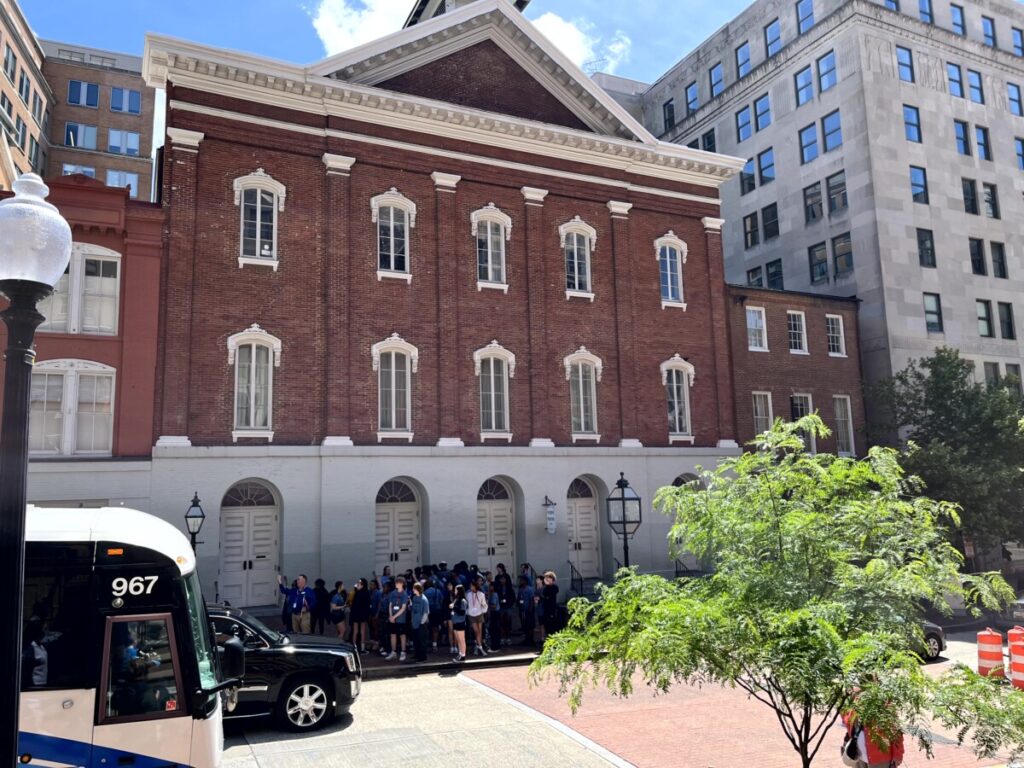
The government forced the closure of the theatre and converted the space to house various government agencies instead. When the National Park Service took over the building in 1932 and opened a small museum, visionaries pushed for the building’s return to its former splendor. Finally in 1968, after decades of fundraising and a complete restoration, Ford’s reopened as a working theater. The current museum opened during a subsequent renovation in 2009.
Museum at Ford’s Theatre
We lined up outside for our timed ticket slot. When the doors opened, park rangers guided us to the museum on the lower level. None of this was here when I was an intern! If you’re a fan of presidential libraries, this museum serves as a small-scale version covering much of Lincoln’s presidency.
Artifacts and displays detail the political and cultural climate during Lincoln’s presidency. In the early 1860s, the Washington Monument remained unfinished, the White House needed repairs, and the Civil War divided the country.
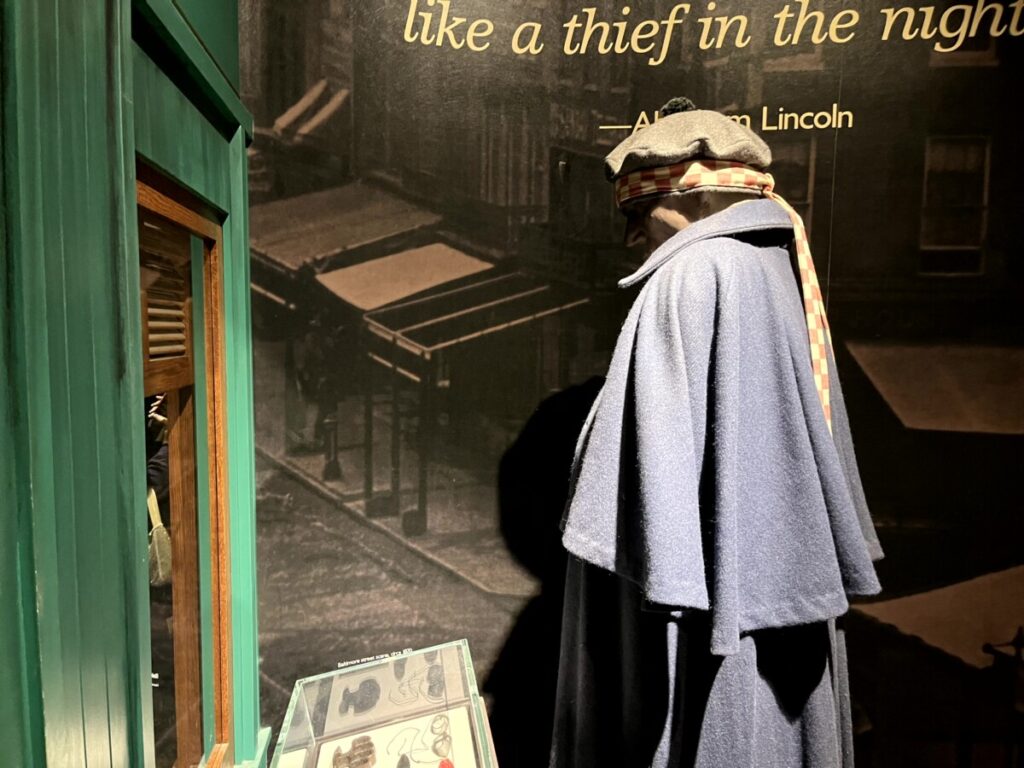
Not everyone wanted Lincoln as President. Just before the inauguration in 1861, rumors surfaced about an assassination plot near Baltimore. Lincoln hired Detective Alan Pinkerton to escort him safely to the White House. Donning a disguise, Lincoln deviated from the original itinerary and took a series of secret overnight trains and a carriage ride to “sneak” into the White House.
The museum covers Fort Sumter, the Gettysburg Address, Lincoln’s Cabinet, Lincoln’s family, and the history of Ford’s Theatre. One area highlights life in the White House with a platter and evening fan while another showcases Lincoln’s personal effects including gloves, inkwell, shaving mug, and shawl. A video in one area highlights the Emancipation Proclamation.
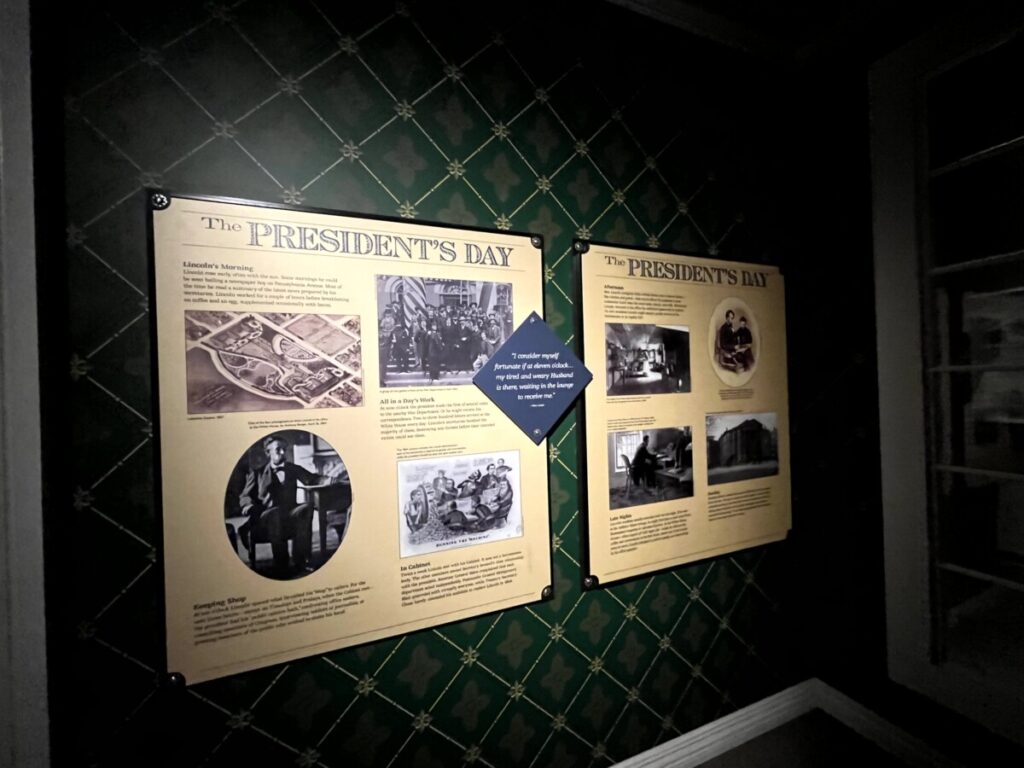
A popular attraction is the 44-caliber derringer that John Wilkes Booth used. Other artifacts include the broken music stand Booth used to block the door to the presidential booth, his compass, diary, and pocket knife.
The museum explains the Surratt Plot in detail. A group of conspirators met at Mary Surratt’s boarding house and plotted to kidnap Lincoln. After Booth changed the plan to shoot Lincoln at the theater, he sent co-conspirators David Herald and Lewis Powell to assassinate Secretary of State William Seward. Although Seward survived the attack, he suffered many injuries. Booth also assigned George Atzerodt to murder Vice President Andrew Johnson. Thankfully, Atzerodt backed out. The Aftermath Exhibit (not included in our tour) goes into greater detail about the manhunt for Booth and the trail of the conspirators.
Ford’s Theatre Auditorium
As we concluded the self-guided tour of the museum, we ascended the stairs to the main auditorium. With red carpet and curving balconies supported by ornate pillars, the auditorium looks much as it did in 1865. The stage was set for Little Shop of Horrors which was currently running. In addition to plays and musicals, Ford’s Theatre presents public programs including Cabinet Conversations.
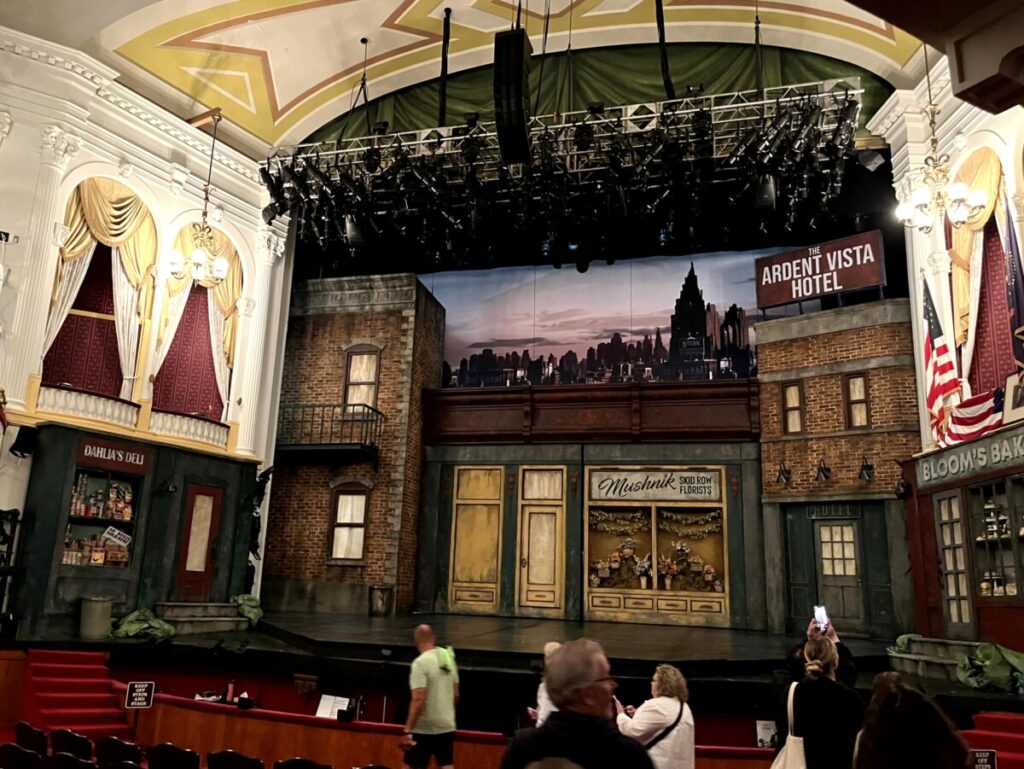
The box where Lincoln watched the performance sits to the upper right of the stage. Nobody is allowed inside the box, even the current President, during performances or tours. Lincoln and his wife watched the play with friends Major Henry Rathbone and his fiance Clara Harris. Booth stabbed Rathbone in the arm. Maybe it was PTSD, survivor guilt, or just plain insanity, but later Rathbone killed his wife (Clara Harris) in 1883 and spent his remaining years in an asylum.
Petersen House
I enjoyed the Petersen House the most on the tour. The boarding house, where Lincoln died the following morning consists of just three rooms on the tour – a front parlor, a back parlor, and the back room where Lincoln died.
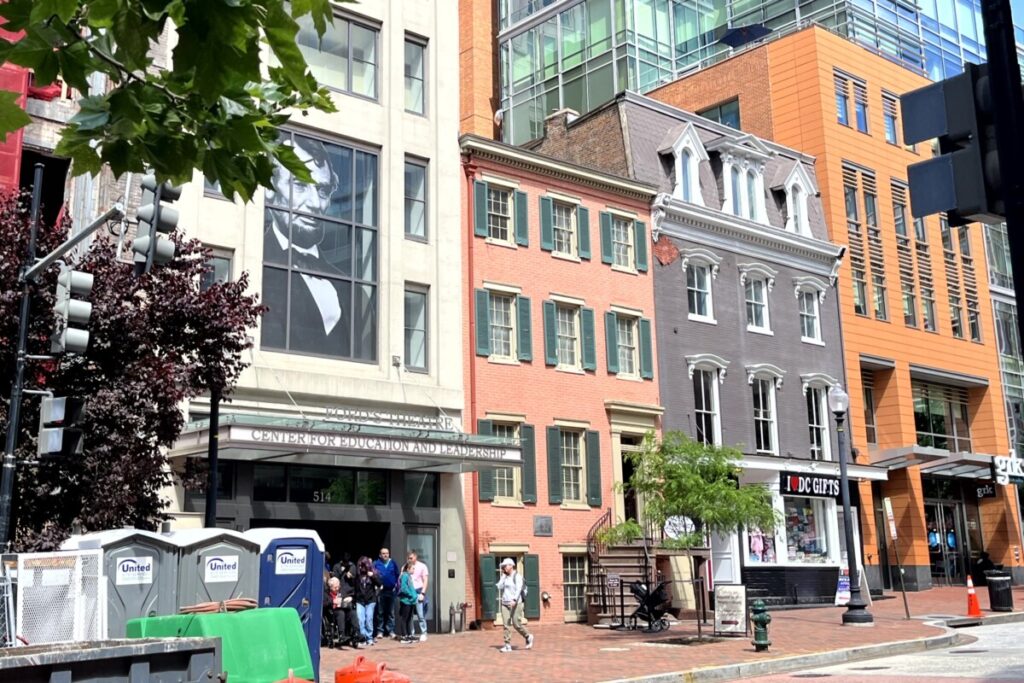
A park ranger stood between the two parlors and told us about the house. When Booth shot Lincoln, doctors realized the President wouldn’t survive long. However, they wanted him to remain comfortable and moved him to a bed at the boarding house. The first floor has been replicated to look much like it did in 1865. Surprisingly, Mary Lincoln wasn’t allowed in the back bedroom with the President. Instead, she had to stand vigil in the front parlor while the men tended to the President.
After departing through the back of the house, the tour took us to a gift shop and past a 34-foot tower of books written about Lincoln in the Center for Education & Leadership. Those with Aftermath tickets can view exhibits on the second through fourth floors of the building.
The Old Post Office Tower
As an intern, I ate one or twice at the food court inside the Old Post Office Tower. With a nine-story atrium, I found the building impressive. Imagine my surprise when we entered and this time the elegant Waldorf Astoria now occupies the site!
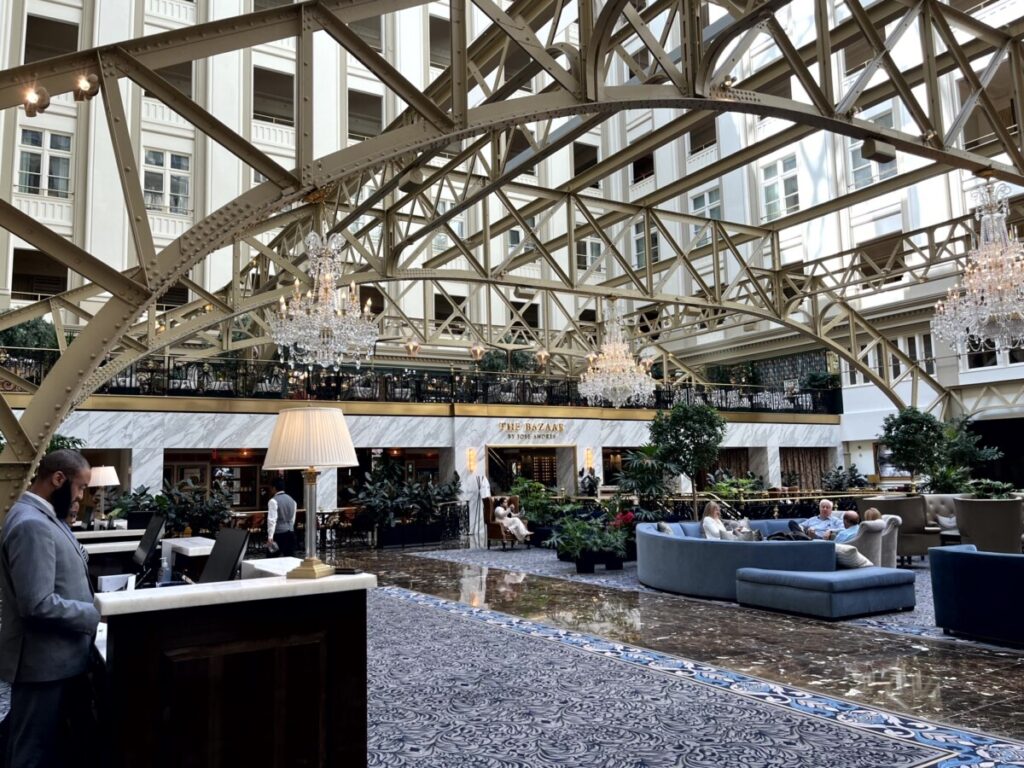
To reach the observation tower, we exited the building and walked around to the 12th Street tower entrance operated by the National Park Service. After going through security, we journeyed on a long hallway with pictures, artifacts, and even the original Post Office vault door. The exhibits highlight the neighborhood and the building’s history.
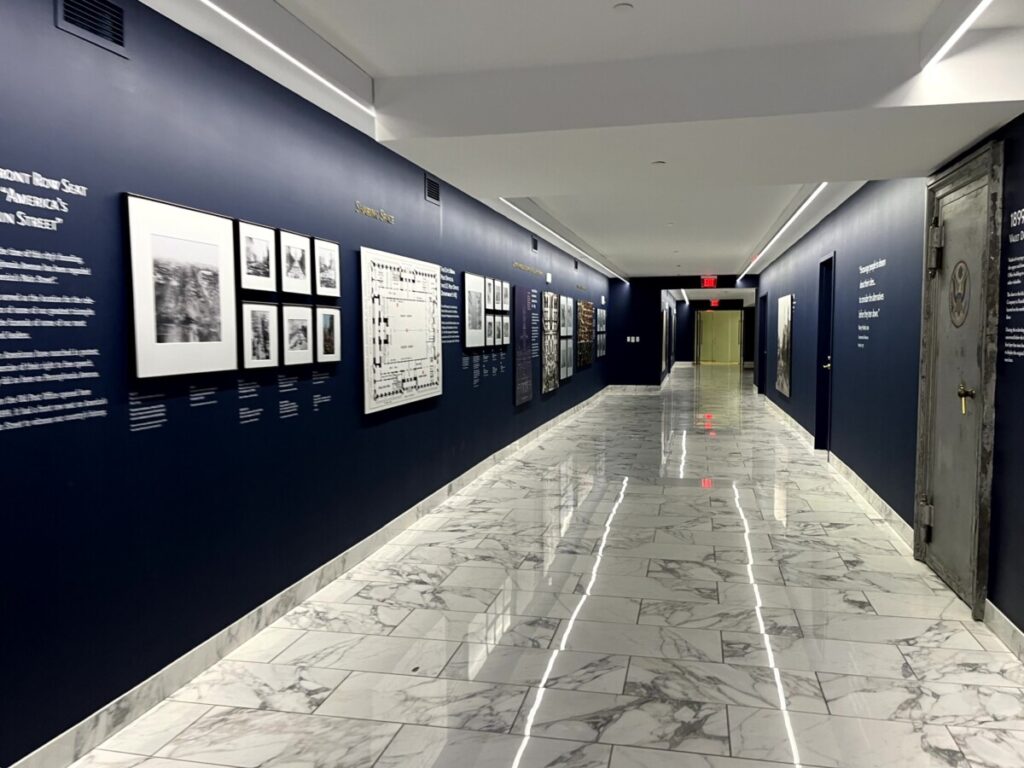
History of the Old Post Office Pavillion
Built by Willoughby J. Edbrooke, who also completed the Georgia State Capital, the steel-framed nine-story building boasted the largest spanning atrium in the world. However, the Post Office only occupied the building for about 15 years before moving to another location.
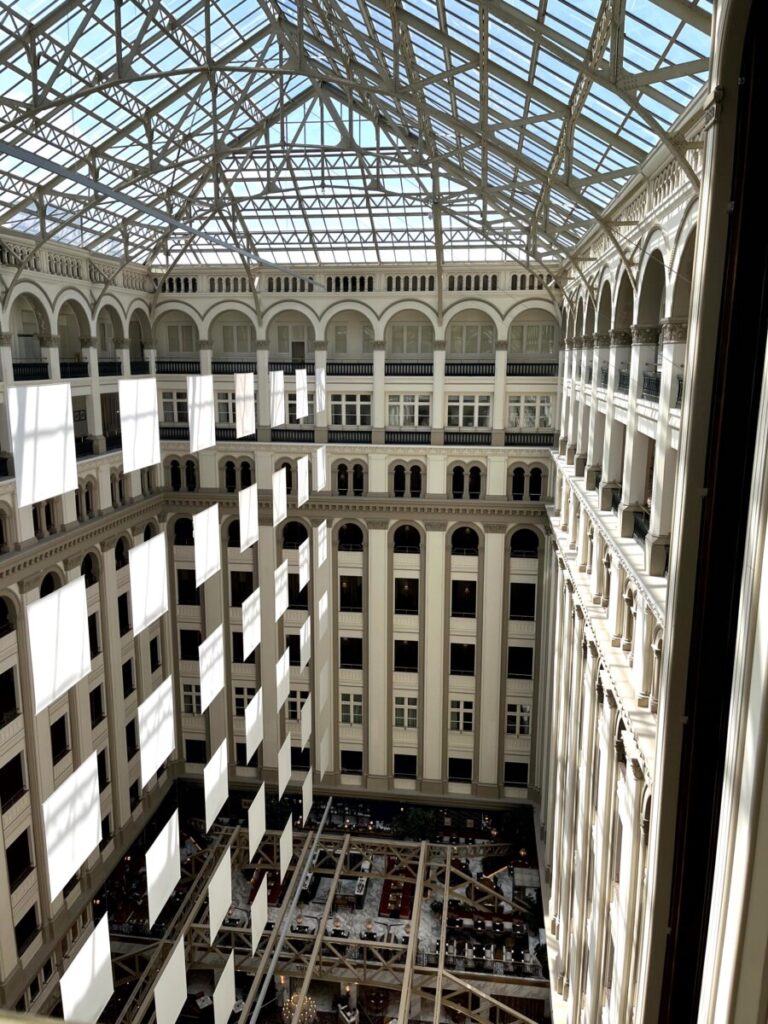
Like many other buildings in DC, the government used the space for federal offices. However, as newer office buildings such as the Federal Triangle complex arose nearby, officials sought to demolish the Post Office Pavillion with its outdated Romanesque-Revival architecture. A grass-roots effort in the 1970s, led by Nancy Hanks, chair of the National Endowment for the Humanities, saved the building and it underwent a $29 million renovation. The new office space restored the glass atrium offering natural light and created areas for retail and a food court. Although I thought it was pretty cool then, apparently retailers and tenants left. Today, the Waldorf-Astoria occupies the building, which you can see from the glassed-in elevators.
View from the Top
We took the first set of elevators to the 9th floor before transferring to a smaller elevator to the 12th floor. The tower allows only 25 visitors at a time on the observation deck, but we didn’t have to wait. At the top, panoramic 360-degree views greeted us.

As the second-tallest building (some say third-tallest) behind the Washington Monument, the Post Office Pavilion offers similar views without all the crowds. The area is enclosed by vertical bars for safety so you have to get your camera lens right up close for good pictures. NPS rangers are on site to answer any questions.
In Conclusion
Ford’s Theatre and the Old Post Office Tower are interesting to see if you’re in the area. Plus both are free or cost very little money! Because the National Park Service operates both sites, visitors can stamp their National Park Passports.
Try to visit Ford’s Theatre early on a weekday to get close to all the exhibits. For more information about tours and performances, click the website here. The Old Post Office Tower closes one day per month for maintenance so check the hours first at the website here.
